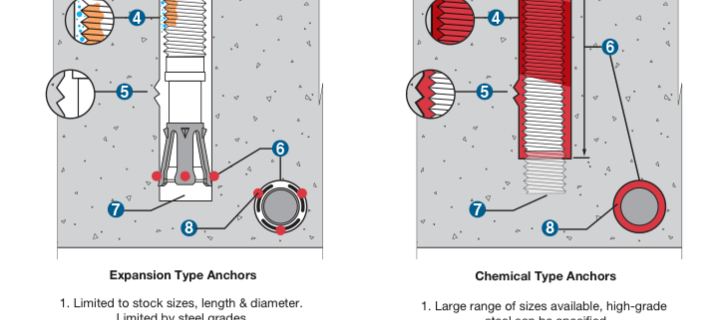Chemical anchors vs expansion anchors
In the realm of construction and fastening, choosing the right anchoring method is crucial for ensuring the safety, stability, and longevity of structures. Two popular options that offer distinct advantages are chemical anchors and expansion anchors.
7/1/20252 min read


Chemical Anchors:
Chemical anchors, as the name suggests, employ the use of specialized chemical compounds to create a strong bond between the anchor and the surrounding material, typically concrete or masonry. The key benefit of chemical anchors lies in their ability to distribute loads over a larger surface area, resulting in improved load-bearing capacity.
The Working Principle:
The working principle of chemical anchors involves a two-component system: epoxy or resin and hardener. These components are mixed in precise ratios and injected into a pre-drilled hole where they chemically react and cure to create a strong adhesive bond. This unique bonding mechanism allows chemical anchors to withstand heavy loads and provide excellent resistance against dynamic forces, making them suitable for critical infrastructure such as bridges, towers, and industrial plants. Chemical anchors find extensive use in projects requiring high load-bearing capacities or in situations. They are commonly employed in structural steel connections, rebar installations, and securing heavy machinery.
Expansion Anchors: These anchors expand once inserted into a pre-drilled hole, creating a tight and secure fit. This mechanical connection ensures excellent load transfer capabilities in various applications.
The Working Principle:
Expansion anchors consist of a sleeve, a metal anchor, and a cone-shaped mechanism. During installation, the anchor is inserted into the hole, and as the nut is tightened, the cone is drawn into the sleeve, expanding it and gripping the surrounding material tightly.
Expansion anchors are widely used in projects that require temporary fastening solutions or situations. They are commonly found in projects such as installing shelves, hanging light fixtures, or securing curtain rods. However, expansion anchors may have limitations when it comes to load-bearing capacities. Their reliance on friction and mechanical expansion means they may not perform optimally in high-load environments or scenarios with dynamic forces.
Conclusion:
In conclusion, both chemical anchors and expansion anchors offer unique advantages in different scenarios. Chemical anchors provide exceptional load-bearing capacities and resistance to dynamic forces, making them suitable for critical applications. On the other hand, expansion anchors offer ease of installation and versatility, making them ideal for temporary or lightweight installations. Ultimately, the choice between these two anchoring methods depends on the specific requirements of the project.
Chemofast Egypt Chemofast Anchoring GmbH Trvix For Exporting And Trading


